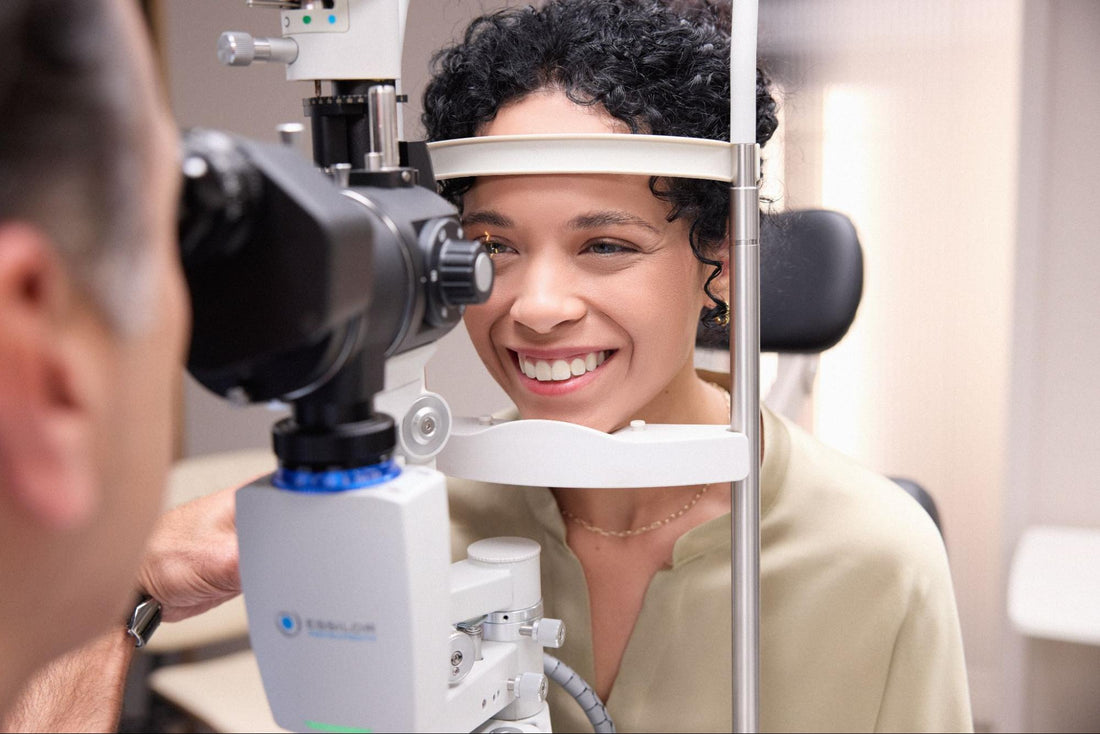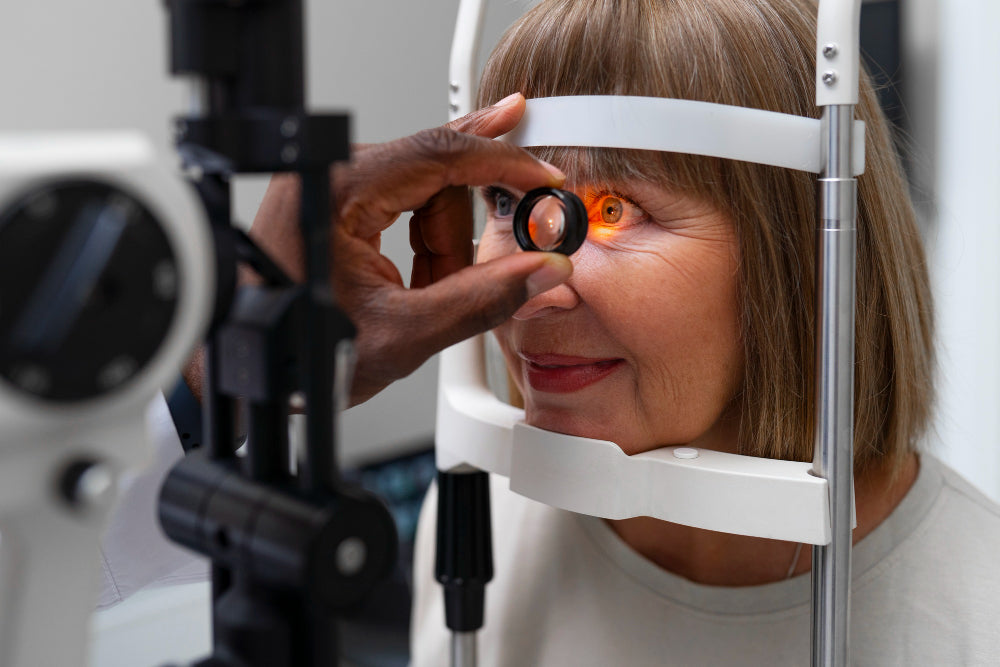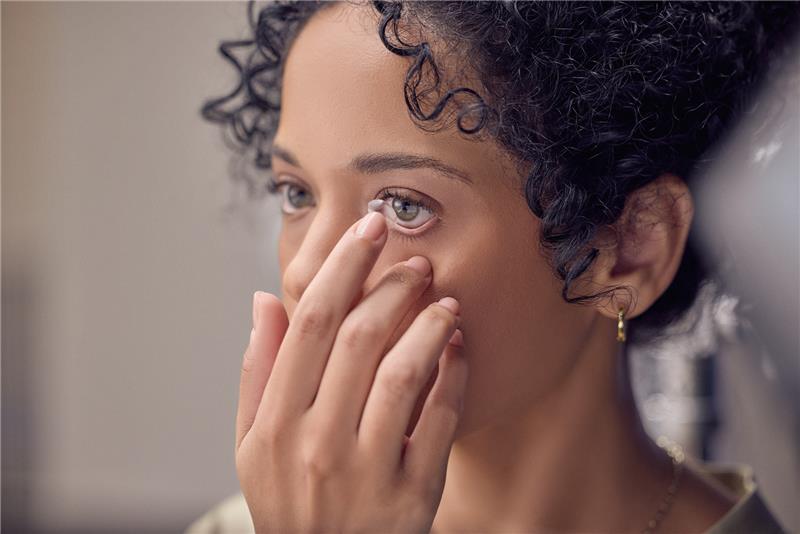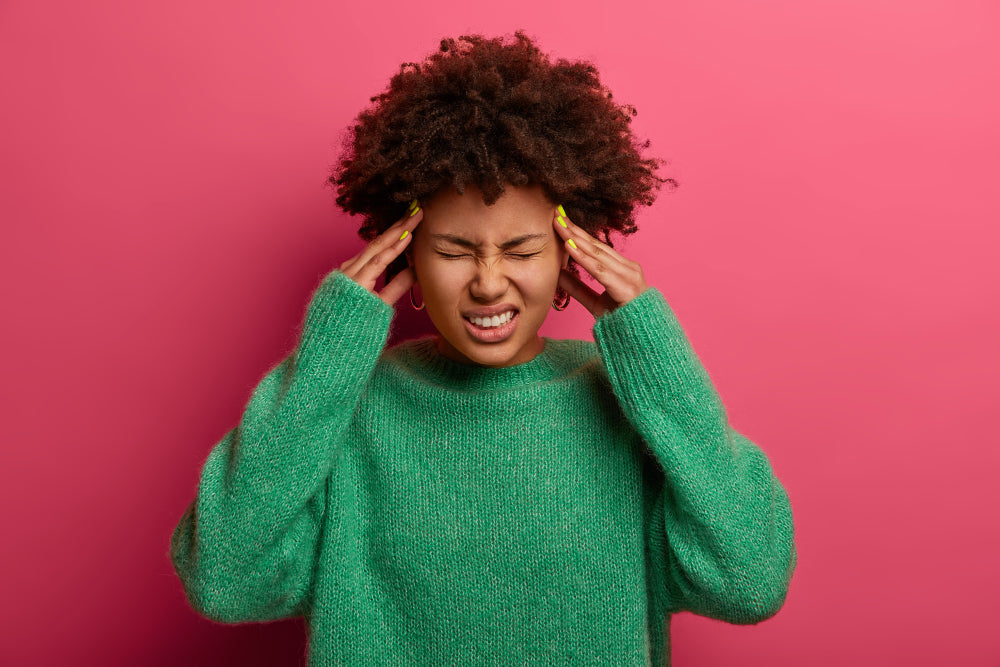Eye pressure, or intraocular pressure (IOP), is a critical indicator of your eye health. Regular monitoring helps detect conditions like glaucoma early on, helping to prevent potential vision loss. But how do professionals actually measure eye pressure, and what should you know about the process?
Let's explore eye pressure measurement, its significance, and how you can help maintain your eye health.
How is Intraocular Pressure Measured?
There are various methods to measure intraocular pressure, each with its own advantages. The most commonly used techniques include:
Goldmann Applanation Tonometry
Known as the gold standard for eye pressure measurement, this method uses a small device to flatten a portion of your cornea gently. Fluorescent dye and numbing drops are applied, and the resistance encountered during the procedure gives an accurate eye pressure reading.
Non-Contact Tonometry (NCT)
Commonly referred to as the "air puff" test, this method doesn't require direct contact with your eye. A puff of air is directed at your cornea, and the machine calculates the eye pressure based on how the cornea reacts. It's quick and ideal for patients who may feel uncomfortable with instruments touching their eyes.
Ocular Response Analyzer (ORA)
The ORA is a more sophisticated form of NCT that utilizes corneal hysteresis and corneal resistance factors to generate a more accurate IOP measurement. This measurement plays a major role in treating patients with glaucoma.
Rebound Tonometry (I Care)
This method uses a small, lightweight probe that bounces off the cornea. It's easy to use and suitable for patients of all ages, including children.
All 4 of the measurements mentioned above are utilized at Vision Source Heights and Vision Source Rio.
What is the Average Eye Pressure?
Normal eye pressure typically ranges between 10 and 22 mmHg (millimeters of mercury), though individual variations are possible. Eye pressure outside this range doesn't always indicate a problem, but it's worth discussing with your eye doctor. We also know that some patients with “normal” eye pressure can still have a type of glaucoma called “normal tension glaucoma”. That’s why additional testing is required for a true glaucoma evaluation.
Understanding how your eye pressure fluctuates can be critical, especially in relation to conditions like glaucoma. High eye pressure is one of the main risk factors for glaucoma, which can lead to irreversible vision loss if left untreated.
What Causes High Eye Pressure?

High eye pressure can be caused by several factors, including:
-
Excess Fluid Production: An overproduction of aqueous humor can elevate eye pressure.
-
Poor Drainage: If the drainage system in the eye is blocked or inefficient, fluid accumulates, raising IOP.
-
Eye Injuries: Eye trauma can disrupt the fluid balance, leading to increased pressure.
-
Medications: Certain drugs, such as steroids, can raise eye pressure.
-
Genetics: A family history of glaucoma or high IOP increases your risk. Having a close relative with glaucoma raises the likelihood of developing the condition.
-
Age: The risk of glaucoma increases as you age, particularly after 60.
-
Race: African Americans and Hispanics have a higher risk of developing glaucoma compared to Caucasians.
Untreated high eye pressure can harm the optic nerve, potentially leading to vision loss. Therefore, regular eye pressure checks and thorough annual eye health evaluations are essential.
How is High Intraocular Pressure Treated?
If your eye pressure is higher than normal, your optometric physician will develop a treatment plan tailored to your needs. Common approaches include:
-
Prescription Eye Drops: These can reduce fluid production or improve drainage.
-
Laser Therapy: Procedures like selective laser trabeculoplasty (SLT) can help by enhancing fluid drainage within the eye.
-
Surgery: In more severe cases, surgical interventions such as trabeculectomy may be necessary to create new drainage pathways.
-
Lifestyle Modifications: Maintaining a healthy weight, reducing caffeine intake, and avoiding activities that strain the eyes can also help.
When Should I See My Optometrist?
Regular eye exams are essential for maintaining optimal eye health. However, you should schedule an eye appointment immediately if you experience:
-
Blurred vision
-
Eye pain or redness
-
Halos around lights
-
Sudden vision loss
Delaying treatment can lead to complications, so don't hesitate to seek professional care. Vision Source Rio and Vision Source Heights offer comprehensive services to diagnose and treat eye pressure issues effectively. We help people see great today and maintain their vision in the future!
Protect Your Vision with Vision Source Rio and Vision Source Heights
Protecting your vision starts with understanding your eyes. Whether you're due for a routine eye pressure check or need treatment for high intraocular pressure, the teams at Vision Source Rio and Vision Source Heights are here to help. We offer a wide range of services, including comprehensive eye exams, glaucoma screenings, and personalized treatment plans.
To understand more about your eye health, including the process of eye dilation during exams, click the following link: why eye doctors dilate your eyes for an eye exam.
Don't wait to prioritize your eye health. Book an appointment today with Vision Source Rio or Vision Source Heights to ensure your eyes receive the care they deserve.
FAQs
1. Is High Blood Pressure the Same as High Eye Pressure?
No, high blood pressure (hypertension) and high eye pressure are 2 separate and distinct conditions. While high blood pressure affects the cardiovascular system, high eye pressure pertains to fluid dynamics within the eye. Both conditions can impact your vision, so it's important to monitor both.
2. Can Blood Pressure Affect My Vision?
Yes, elevated blood pressure can damage the blood vessels in your eyes, potentially leading to conditions like hypertensive retinopathy. While this isn't the same as high eye pressure, it highlights the importance of managing overall health.
3. How Can I Relieve Eye Pressure at Home?
While professional treatment is necessary, you can also:
-
Practice relaxation techniques to reduce stress
-
Maintain a diet rich in antioxidants
-
Avoid prolonged screen time to minimize eye strain
If you're experiencing discomfort from pressure behind your eyes, you might find it helpful to try other methods to relieve pressure behind the eyes. Simple changes in your routine, combined with a more holistic approach, can significantly affect how your eyes feel daily.
4. How Can I Check Eye Pressure with Fingers?
Manually checking eye pressure by pressing your eyelid is unreliable and can cause harm. Always rely on professional eye pressure measurements for accurate results.
5. What is the Normal Eye Pressure?
“Normal” eye pressure ranges between 10 and 21 mmHg. However we do know that some patients with “normal” pressures actually have low tension glaucoma. Annual comprehensive eye exams that include eye pressure tests help ensure you stay within this range and avoid potential complications.





